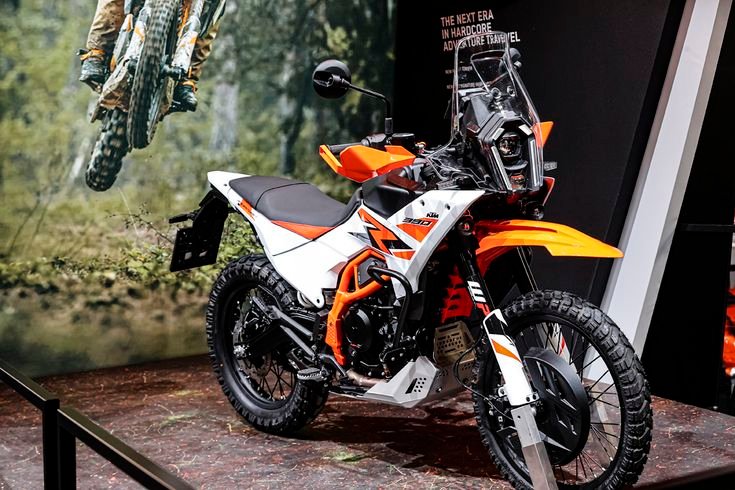
Tesla has redefined the automotive landscape, transforming perceptions of electric vehicles (EVs) and leading innovation in clean energy transportation. Founded in 2003, Tesla started with a mission to bring electric cars to the mainstream. Over the years, it has introduced a series of pioneering models, each contributing to the growth and acceptance of electric vehicles worldwide. Here’s a look at the journey and evolution of Tesla, model by model.
Tesla Roadster (2008)
Tesla began with the Roadster, launched in 2008. The car was revolutionary for its time, offering a range of over 200 miles per charge—a significant achievement back then. It used a modified Lotus Elise chassis, making it lightweight and responsive. The Roadster proved that electric cars could be fun, powerful, and capable of long distances. Although produced in limited numbers, the Roadster laid the foundation for Tesla’s electric vehicle technology and raised awareness of the brand.
Tesla Model S (2012)
In 2012, Tesla introduced the Model S, a premium all-electric sedan that changed how the world viewed electric cars. The Model S offered exceptional range, high performance, and advanced technology. With a range of over 300 miles on a single charge, it set new standards for electric vehicles. Tesla equipped the Model S with Autopilot, its advanced driver-assistance system, making it one of the first cars to feature semi-autonomous driving capabilities. This model received global acclaim and became a best-seller in the luxury EV market.
Tesla Model X (2015)
Tesla expanded its lineup in 2015 with the launch of the Model X, a luxury electric SUV. The Model X stood out with its unique Falcon Wing doors, which opened upwards, adding a futuristic touch. It offered high performance, with a range of over 250 miles and impressive acceleration. The Model X also came with Autopilot and advanced safety features, making it one of the safest SUVs in its class. This model attracted families and environmentally-conscious drivers who wanted space without compromising on luxury and performance.
Tesla Model 3 (2017)
The Model 3 marked a significant turning point for Tesla and the EV market. Released in 2017, it was Tesla’s first mass-market electric vehicle, with a more affordable price range than its previous models. The Model 3 became an instant hit, combining practicality, performance, and cutting-edge technology. With a range of up to 350 miles, a minimalist interior, and Tesla’s signature Autopilot, the Model 3 became one of the best-selling electric cars worldwide. It demonstrated that electric cars could be accessible to the average consumer, setting new sales records and cementing Tesla’s place in the mass market.
Tesla Model Y (2020)
Tesla introduced the Model Y in 2020, an electric compact crossover based on the Model 3 platform. The Model Y targeted families and those who wanted the space of an SUV but the efficiency of an electric vehicle. With a range of up to 326 miles and a similar minimalist design to the Model 3, the Model Y quickly gained popularity. Its versatility, combined with Tesla’s performance and technology, made it one of the most popular electric vehicles globally. The Model Y further demonstrated Tesla’s ability to innovate and respond to market demands for practical, stylish, and environmentally-friendly transportation.
Tesla Cybertruck (Expected 2024)
Tesla announced the Cybertruck in 2019, revealing an unconventional design that sparked excitement and debate. Unlike traditional trucks, the Cybertruck features a futuristic, angular design with a stainless steel exoskeleton for added durability. It promises impressive specs, including a range of up to 500 miles and a 0-60 mph time of under 2.9 seconds for its tri-motor version. Tesla positioned the Cybertruck as a versatile electric vehicle that can compete with gasoline-powered trucks. The Cybertruck’s production has faced delays, but Tesla aims to begin deliveries in 2024, marking its entry into the lucrative pickup truck market.
Tesla Roadster 2.0 (Expected 2025)
Tesla plans to bring back the Roadster, its original model, with a completely re-engineered version. Announced in 2017, the new Roadster promises groundbreaking performance with a projected range of 620 miles and a top speed of over 250 mph. The Roadster 2.0 aims to showcase Tesla’s advancements in battery and electric motor technology, making it the ultimate electric sports car. Although delayed, Tesla’s vision for the Roadster 2.0 reflects its commitment to pushing the boundaries of electric vehicle performance.
Tesla Semi (Expected 2024)
The Tesla Semi represents Tesla’s foray into the commercial vehicle sector. First announced in 2017, the Tesla Semi is an all-electric, Class 8 truck designed to reduce emissions in the freight industry. It promises a range of up to 500 miles on a single charge, with significantly lower operating costs compared to traditional diesel trucks. Tesla designed the Semi with an emphasis on driver comfort and safety, featuring an advanced autopilot system for highway driving. The Semi’s introduction will mark a new chapter in Tesla’s evolution, addressing sustainability concerns in the commercial transportation sector.
Tesla’s Impact and Innovations
Tesla’s impact extends beyond individual models. With every new release, Tesla introduces innovations in battery technology, energy efficiency, and software integration. Tesla’s Gigafactories, large manufacturing plants dedicated to producing batteries and electric vehicles, play a vital role in reducing costs and meeting global demand. Tesla also continuously updates its software over the air, providing enhancements and new features without requiring a physical visit to a service center. This unique approach has set Tesla apart in the automotive industry.
Autopilot and Full Self-Driving (FSD) Technology
Autopilot has been one of Tesla’s most distinctive features. It allows for semi-autonomous driving, where the car can steer, accelerate, and brake within its lane. Tesla has been refining its Full Self-Driving (FSD) technology, aiming for complete autonomy. While FSD is still in development, Tesla’s focus on autonomous driving has spurred advancements across the industry, with other automakers and tech companies investing heavily in similar technologies.
Tesla’s Global Reach and Market Presence
Tesla has become a global phenomenon. It leads EV sales in many countries, including the United States, China, and several European nations. Tesla’s Gigafactory in Shanghai has expanded its presence in Asia, while its Berlin Gigafactory strengthens its footprint in Europe. This international presence has allowed Tesla to scale its operations, reduce production costs, and deliver vehicles more efficiently. Tesla’s commitment to building charging infrastructure worldwide has further supported its growth, making EV ownership more convenient.
The Future of Tesla
Tesla’s future looks promising. With upcoming models like the Cybertruck, Roadster 2.0, and Semi, Tesla is diversifying its product range to reach new market segments. Tesla’s work on energy products, such as solar panels and Powerwall batteries, complements its vehicle lineup, creating a holistic approach to sustainable energy. Tesla also continues to invest in research and development, aiming to improve battery technology, vehicle range, and self-driving capabilities.
Tesla’s mission to accelerate the world’s transition to sustainable energy has guided its innovations and market strategies. From a niche EV manufacturer, Tesla has become a leader in the global auto industry, pushing boundaries and setting new standards for electric and autonomous vehicles.
Conclusion
The evolution of Tesla showcases a journey of innovation, resilience, and vision. Each model, from the Roadster to the upcoming Cybertruck, represents a step toward Tesla’s goal of sustainable transportation. Tesla’s impact on the automotive industry is undeniable, inspiring a shift toward cleaner, smarter vehicles worldwide. As Tesla continues to evolve, it will likely play an essential role in the future of transportation and energy, paving the way for a greener and more technologically advanced world.
ALSO READ: Robotics in Automotive Industry: Key Trends





